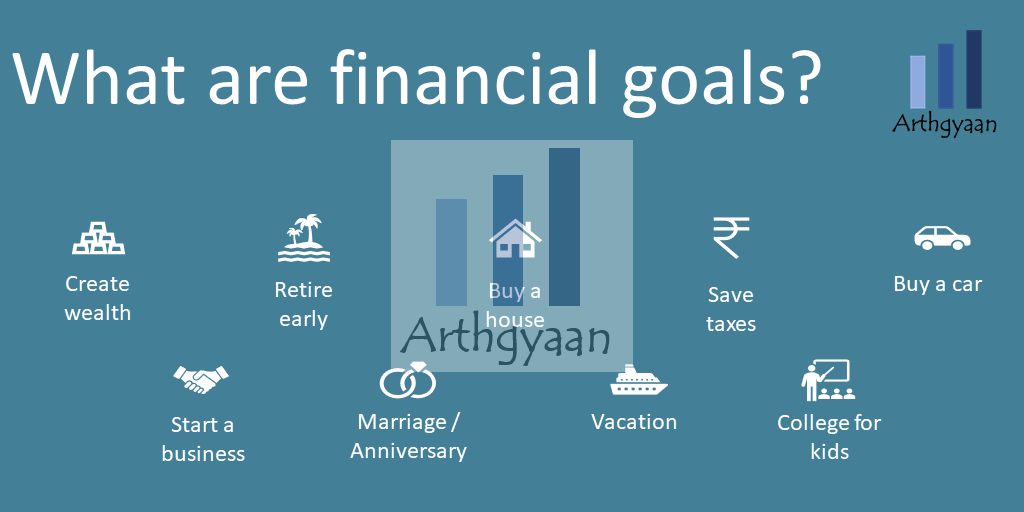How to climb the wealth ladder in India?
1 lakh, 1 crore or 10 crores: how much do we need to be wealthy and what we should do at every step of the wealth ladder.
1 lakh, 1 crore or 10 crores: how much do we need to be wealthy and what we should do at every step of the wealth ladder.

I recently came across this gem of an article by Nick Maggiulli, who writes a fascinating blog at OfDollarsAndData.com. In this article below, I have added a few thoughts to adapt it to the Indian context regarding Nick’s idea of Climbing the Wealth Ladder.
Accumulation of wealth has a profound influence on our lives. If we look at the role of money in our lives, we can think of the following five functions where money
However, to ensure that money plays its intended role in our lives, we need to know about the wealth ladder, what we should do at every step and how our behaviour plays an essential role in climbing up.
In this article, we use the term wealth to define net worth, essentially what we own as assets (money in the bank, stocks, mutual funds, gold, house etc.) less any loans. If you want an alternative view using age-wise life stage, have a look at this post: What should your financial life look like at different life-stages?
The wealth ladder applies geometric progression, human behaviour and life goals in one easy to understand construct.
| Level | Wealth | Can / Should Buy | Stretch / Loan | Decision-making level |
|---|---|---|---|---|
| Level 1 | 10,000 or less | Insurance (monthly premium) | Emergency fund | ₹ 100 |
| Level 2 | 1 lakh | Emergency fund | Groceries, Restaurant of choice, White goods | ₹ 1,000 |
| Level 3 | 10 lakhs | Groceries, Restaurant of choice, White goods | Car, Foreign Vacations | ₹ 10,000 |
| Level 4 | 1 crore | Car, Foreign Vacations | House | ₹ 1 lakh |
| Level 5 | 10 crores+ | House | Luxuries | ₹ 10 lakhs |
How to understand this?
An input to the decision making can be the hourly wage: the average income per hour. To plan expenses better, look at how long it takes to earn that 1%.
Read more here: How long does it take to earn what we spend on?
Anyone who starts earning for the first time without having immediate access to family wealth begins here. The most important thing to do here is to secure a financial position. Then, once you have ₹ 10,000 in the bank, explore taking a term insurance policy (if needed on a monthly/quarterly premium basis) and start your emergency fund.
As you progress from Level 1 to Level 2, research a health insurance policy and take one as soon as you can afford it.
At this level, purchase decisions between two comparable items may be driven by a ₹100 or lesser difference in price.
Aggressive savings using a bank savings account or FD/RD is needed to move to level 2. In addition, you should ensure that insurance policies are purchased, and the emergency fund is funded. In addition, there should be little or no high-interest debt like credit cards or personal loans.

Once you reach this level, it is an excellent time to figure out your financial goals and start goal-based investing.
You know that your financial position is secure due to having necessary insurance policies and a funded emergency fund. The threshold of ₹1,000 means that you choose what you buy when the price difference is in thousands between two similar items.
To take care of discretionary expenses like electronics and white goods, you can consider starting a sinking fund. You should continue saving via a bank account or debt mutual funds to avoid taking loans/EMI to purchase items that you need.
At this level, you can freely spend on groceries, entertainment and restaurants than before. You also start aspiring for big-ticket items like cars and foreign vacations at this level. Since these are level 4 items, planning for these items via goal-based investing is the right way forward. If these items are purchased via EMI or on a credit card, they will delay investments. Altogether, paying off high-interest debt and avoiding taking more debt like this should be the focus of this level.
You should also evaluate whether you are ready to buy a house yet using this calculator: Goal-based investing: how to purchase your dream home
At this point, consider a personal accident insurance coverage to safeguard against accidents where you do not die but cannot earn.
Reaching a level of one crore is a significant milestone. At this point, prices that differ by less than a lakh are not that much a problem than before. You can now live a little compared to before by buying the car you want or going for a foreign vacation as and when desired. This is also the time to buy a house if you want to, pay off your car and educational loans and plan for luxuries as well as retirement/FIRE:
Due to compounding, you can now grow your wealth faster provided you can avoid these 12 mistakes that interrupt compounding.
At this level, an incremental increase in wealth has the most negligible impact on our quality of life. You can choose a house when and where you want and/or afford prestigious foreign degrees for your children. More importantly, it enables you to have more and more control over how you spend your time.
The exponential increase in wealth due to compounding is now highly visible. It has the potential to sustain a certain level of lifestyle expenses, adjusted for inflation, indefinitely.
Inflation: the impact on your goals and how to choose assets that beat it
Beyond level 5, it is more a question of having complete mastery over your time than how wealthy you are. If you achieve financial independence, your current wealth becomes independent of the ladder. It allows you to sustain your lifestyle for the desired duration.
We need to keep certain dos and don’ts in mind to keep climbing the wealth ladder. It is more a question of avoiding common mistakes that destroy wealth than doing everything perfectly.
1. Email me with any questions.
2. Use our goal-based investing template to prepare a financial plan for yourself.Don't forget to share this article on WhatsApp or Twitter or post this to Facebook.
Discuss this post with us via Facebook or get regular bite-sized updates on Twitter.
More posts...Disclaimer: Content on this site is for educational purpose only and is not financial advice. Nothing on this site should be construed as an offer or recommendation to buy/sell any financial product or service. Please consult a registered investment advisor before making any investments.
This post titled How to climb the wealth ladder in India? first appeared on 26 Nov 2021 at https://arthgyaan.com